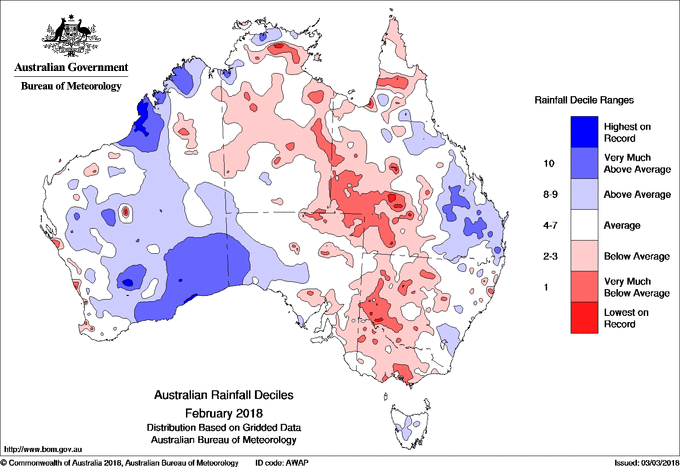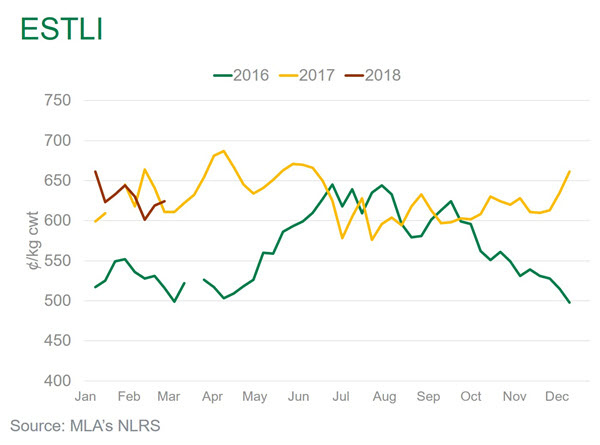Subscribe to The Weekly e-newsletter
For in-depth red meat market news, information and analysis.
Market watch: sheepmeat in February
07 March 2018
The wetter than average rainfall outlook for February did not come to fruition for many eastern sheep-producing regions of the country, which saw lamb and mutton processing remain elevated during the month.
Rainfall in western NSW and over much of Victoria was ‘below’ and ‘very much below average’ – with some parts of these states receiving the lowest February rainfall on record.

Lamb slaughter
In recent years, February has typically seen a small spike in eastern states lamb slaughter, while this year February levels rose 11% from January – the largest change in the past 10 years. Furthermore, at 1.48 million head, February was 4% higher year-on-year and up 2% on the five-year average. NSW and Victoria recorded the largest increases in February lamb slaughter as they absorbed the capacity lost in SA due to the temporary closure of a major processor.
A look into the saleyards
The number of lambs sold through saleyards, on the other hand, declined 12% year-on-year in February across the eastern states, to almost 962,000 head. During February, eastern states lamb over-the-hook indicators were often at a premium to saleyard indicators, which may have seen producers opt to secure prices selling direct-to-works rather than at the saleyard market.
Indicator insights
The Eastern State Trade Lamb Indicator (ESTLI) averaged 622¢/kg carcase weight (cwt) in February, back 3% on year-ago levels. However, at these levels, the Indicator remains historically high, up 20% on the five-year average for the month. While prices typically start to ease at this point in the season, the hotter and drier than expected weather would have brought some quality-related price declines into play as well. However, some decent rain along the east coast in the final week of the month did see the eastern states saleyard indicators pick up somewhat.

Seasonal conditions
While there has been significant rainfall in the northern cattle producing regions of the country during the first week of March, many of the major sheep supply areas across western NSW, Victoria and SA remained fairly dry.
Looking ahead, the BOM autumn outlook is not overly positive for much of central Australia, and with large parts of the eastern states anticipating a 40-50% chance of exceeding median rainfall. Lamb supplies from SA and Victoria typically start to wind down during autumn, with the majority of stock coming out of NSW at this time of the year. If the rain extends to a decent early autumn break for these supply areas, it would lend support to the market and encourage producers’ flock rebuilding efforts.


